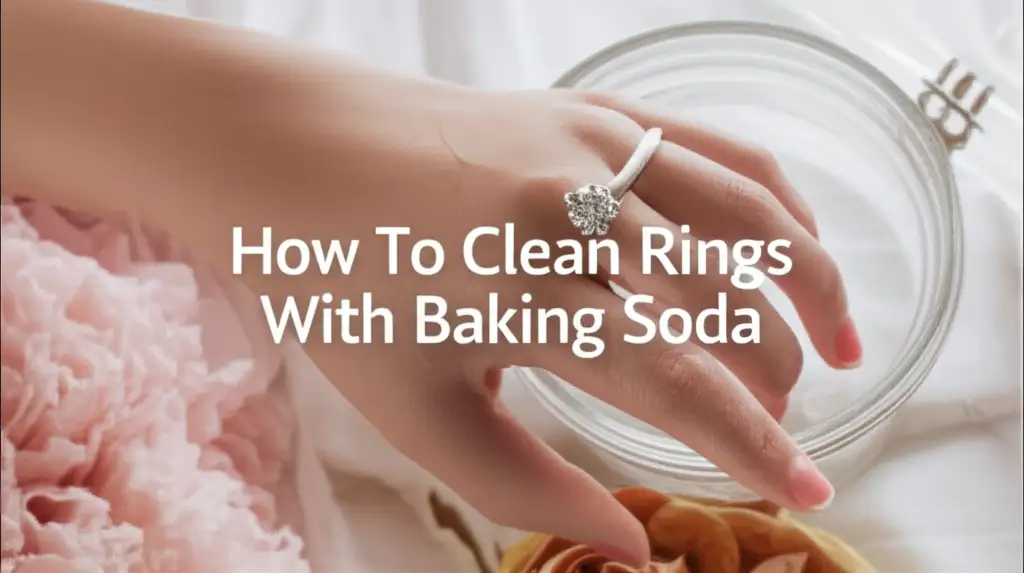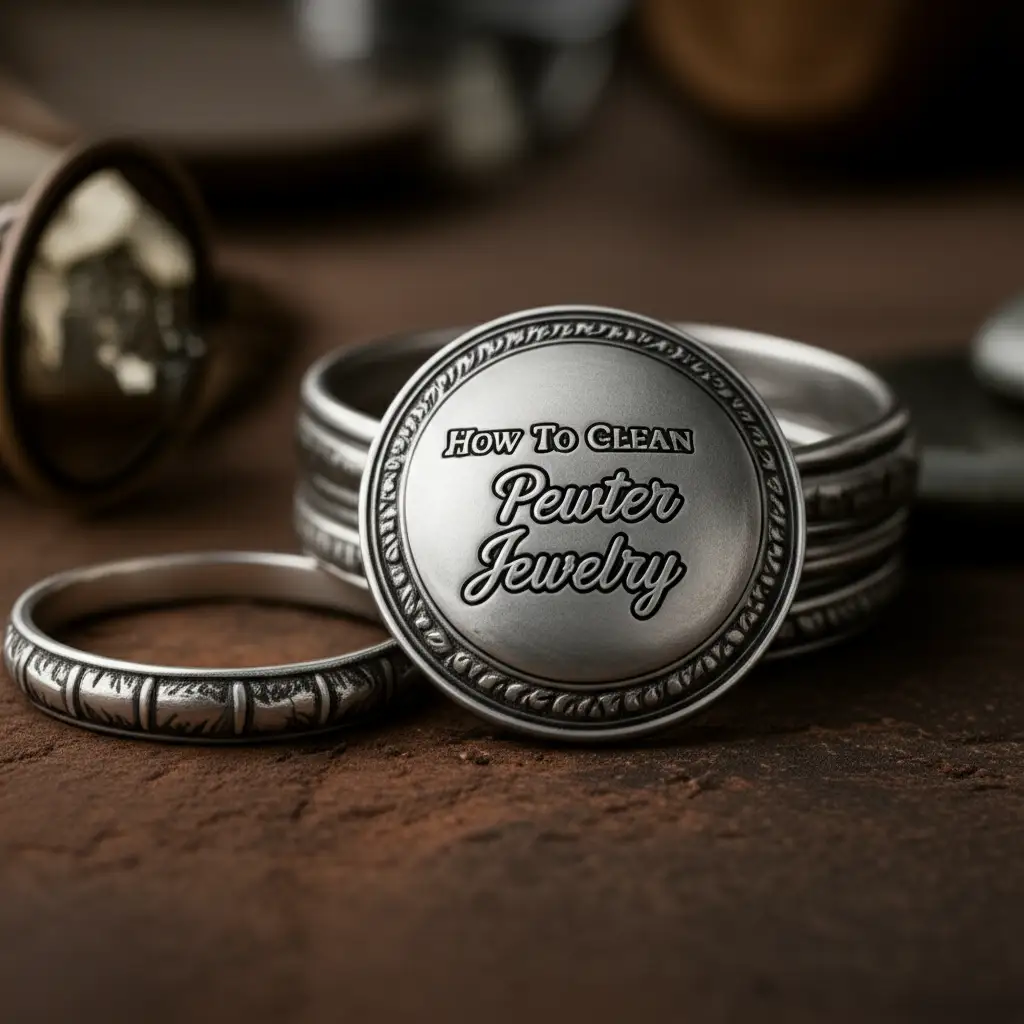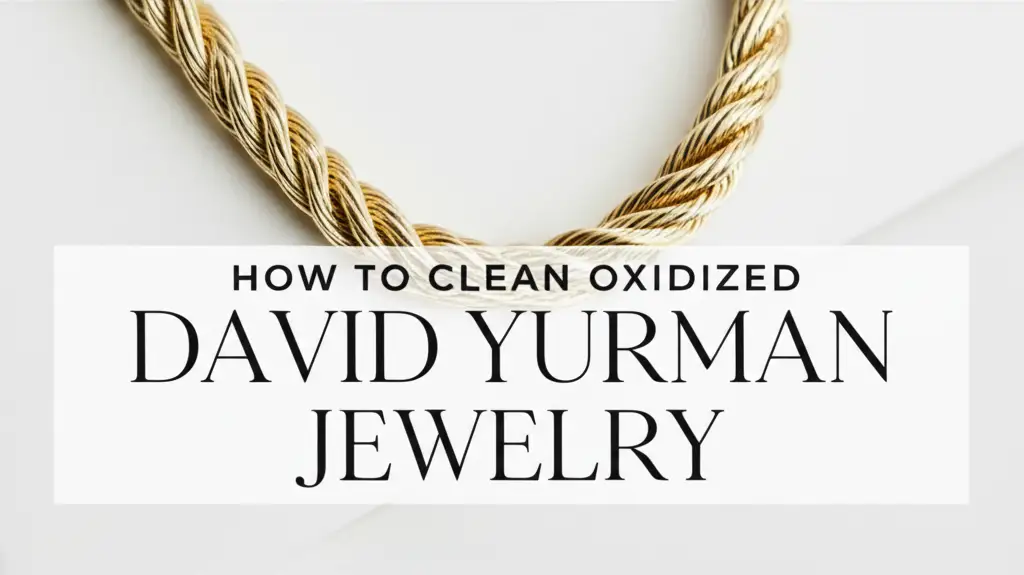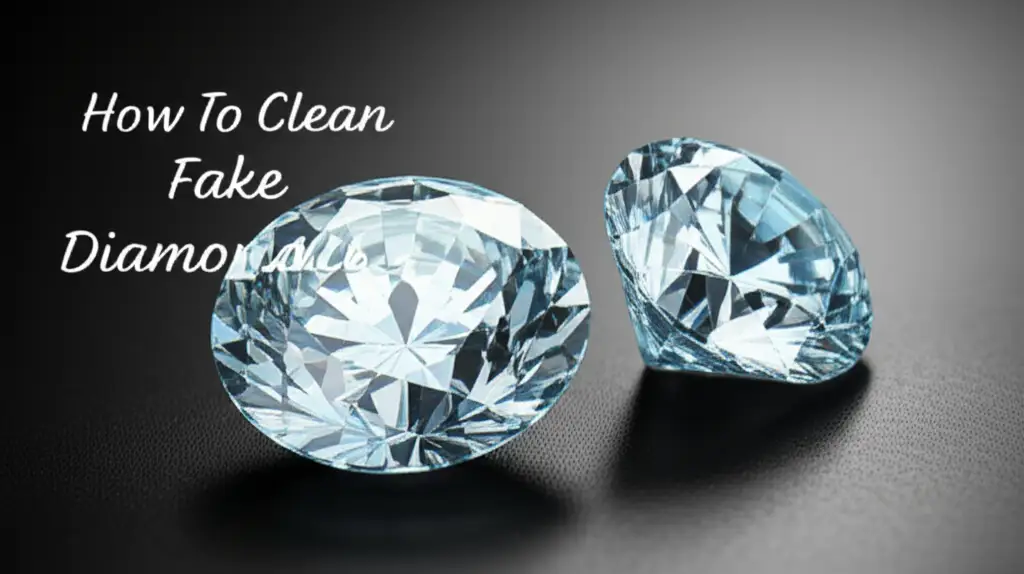· Jewelry Care · 16 min read
How To Clean Silver Necklace With Baking Soda
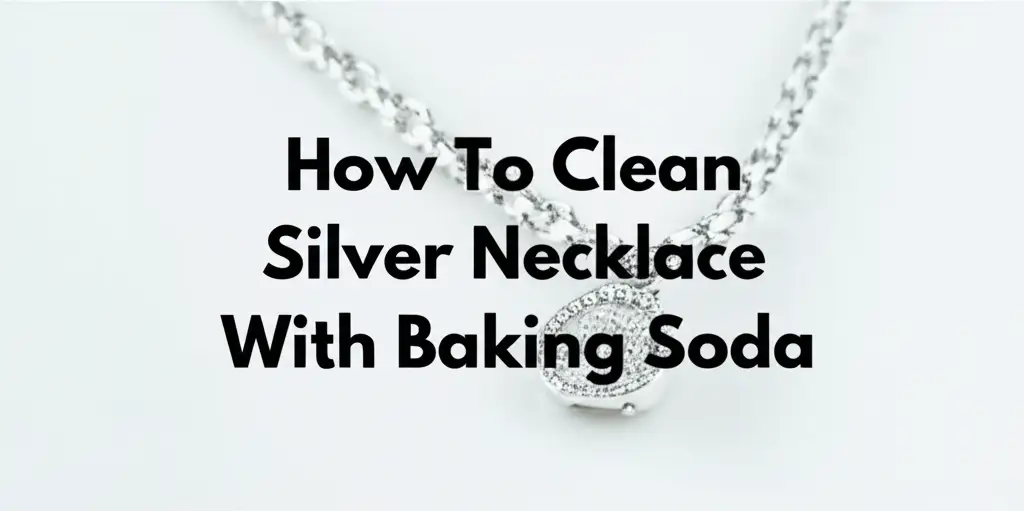
Restore Shine: How To Clean Silver Necklace With Baking Soda
My silver necklaces mean a lot to me. They hold memories and add sparkle to my outfits. I get sad when they start to look dull. Tarnish, that dark film, can make beautiful silver look old and uncared for. It happens to all real silver over time. I used to think cleaning silver was hard. Then I learned how to clean silver necklace with baking soda. It changed everything for me.
This guide helps you understand why silver tarnishes. It shows you exactly how to use baking soda to bring back that shine. We will cover the simple steps for effective cleaning. I will also share tips to keep your silver looking good for longer. You can easily restore your favorite pieces at home.
Takeaway:
- Baking soda and aluminum foil remove silver tarnish using a chemical reaction.
- Gather simple household items like a bowl, hot water, and a soft cloth.
- Follow easy steps for soaking, rinsing, and drying your silver necklace.
- Understand when to use caution, especially with gemstones or antique silver.
- Proper storage and regular care prevent future tarnishing.
How to clean silver necklace with baking soda: You can clean a silver necklace with baking soda by creating a simple chemical reaction. Place the necklace in a bowl lined with aluminum foil, add baking soda, and pour hot water over it. This method lifts tarnish from the silver surface.
Understanding Silver Tarnish: Why Your Necklace Loses Its Luster
Silver jewelry, especially necklaces, often develops a dark coating. This coating is called tarnish. Tarnish makes silver look dull. It reduces the natural shine of the metal. Understanding why this happens helps us prevent it.
Silver is a reactive metal. It reacts with sulfur compounds in the air. This reaction creates silver sulfide. Silver sulfide is dark and sticks to the surface of your necklace. This is the tarnish you see. It is a natural process for pure silver.
The Chemical Reaction of Tarnishing
Air contains tiny amounts of sulfur. These sulfur particles come from many sources. Pollution, rubber, even some foods release sulfur. When silver meets these sulfur particles, they bond. This bond forms silver sulfide.
The silver sulfide sits on the surface. It does not harm the silver underneath. It just makes the silver look bad. Removing this layer restores the silver’s original look. Baking soda helps reverse this chemical process.
Common Causes of Tarnish
Many things speed up tarnishing. Air exposure is a main cause. Leaving silver out in the open leads to more tarnish. Humidity also plays a role. Moist air makes sulfur reactions happen faster. I notice my silver tarnishes quicker in summer.
Other common causes include certain chemicals. Hairspray, perfumes, and even lotions can cause tarnish. Sweat from your skin also contains chemicals. Wearing your necklace often without cleaning can lead to tarnish. Storing silver near wood or wool can also cause issues. These materials may release sulfur.
Why Baking Soda is Your Silver Necklace’s Best Friend
Baking soda is a common household item. It is also a powerful cleaner. Many people use it for cleaning various items. For silver, baking soda offers a safe and effective way to remove tarnish. It does this without harsh chemicals.
I like using baking soda because it is natural. It is also very gentle on metals. This makes it a great choice for delicate jewelry. You do not need to buy special, expensive cleaners. You probably already have baking soda in your pantry. Cleaning with baking soda and vinegar is common for many household tasks, showing its versatility.
The Science Behind Baking Soda’s Power
The magic of baking soda for silver cleaning involves a chemical reaction. When baking soda mixes with hot water and aluminum foil, an electrolytic cell forms. The aluminum acts as a negative electrode. The silver acts as a positive electrode. The baking soda solution is the electrolyte.
This setup causes the sulfur atoms to move. They move from the silver to the aluminum. The silver sulfide breaks down. The sulfur then bonds with the aluminum instead. This process lifts the dark tarnish directly off your necklace. Your silver becomes clean again. It does not lose any silver in the process.
Safety and Accessibility
Baking soda is safe for most people to use. It is non-toxic. It does not produce harmful fumes. This makes it ideal for cleaning items indoors. I feel good knowing I am not using harsh chemicals near my skin or in my home.
It is also incredibly accessible. You can buy baking soda at any grocery store. It costs very little. This method saves you money. You do not need professional cleaning services. Anyone can do this at home. This makes silver care easy for everyone.
Essential Supplies for Cleaning Your Silver Necklace
Getting ready for cleaning your silver necklace is simple. You do not need many tools. Most items are likely already in your home. Having everything prepared makes the process smooth. It helps ensure a successful cleaning.
I always gather my supplies first. This prevents me from stopping halfway through. Make sure your workspace is clean. Protect your surface from any water spills. A clean towel helps keep things tidy.
List of Items You Will Need:
- Aluminum Foil: You need a piece large enough to line your bowl. The foil is crucial for the chemical reaction.
- Baking Soda (Sodium Bicarbonate): This is the main cleaning agent. Make sure it is fresh.
- Heat-Resistant Bowl: A glass or ceramic bowl works best. It needs to hold hot water safely.
- Hot Water: Very hot water is important. It helps dissolve the baking soda and start the reaction. Do not use boiling water directly from a stove. Use hot tap water or water heated in a kettle.
- Soft Cloth (Microfiber or Cotton): For drying and polishing. Avoid abrasive materials.
- Tongs or Plastic Utensil: To handle the hot necklace.
- Old Toothbrush (Optional): For stubborn areas, but use it very gently.
Quick Tips on Choosing Materials
Choose a bowl that is wide enough. Your necklace should sit flat at the bottom. The aluminum foil must touch the necklace. This ensures good contact for the reaction. Use fresh baking soda. Old baking soda might not be as effective.
For drying, a microfiber cloth is best. It is soft and lint-free. This prevents scratching your silver. Avoid using paper towels. They can leave tiny scratches. Make sure the cloth is clean. A dirty cloth can transfer grime back to your necklace.
Step-by-Step Guide: The Foil and Baking Soda Method
This method is popular for good reason. It uses a chemical process to remove tarnish effectively. It is safer for your silver than abrasive rubbing. I find it very satisfying to watch the tarnish disappear. This process makes your silver shine brightly again.
Follow these steps carefully. They ensure the best results. Take your time with each stage. Rushing can lead to less effective cleaning. This method works well for sterling silver necklaces.
Preparing Your Cleaning Station
First, choose a clean, flat surface. Line your heat-resistant bowl with aluminum foil. Make sure the shiny side of the foil faces up. The foil should fully cover the bottom and sides of the bowl. It must be in contact with the water later.
Place your tarnished silver necklace directly on the foil. Ensure the necklace touches the foil as much as possible. If you have multiple pieces, spread them out. They all need to touch the foil. This connection is key for the reaction.
The Soaking Process Explained
Next, sprinkle baking soda over your necklace. Use about one to two tablespoons for a medium-sized bowl. For larger pieces or more items, you might use more. Cover the necklace completely with the baking soda.
Now, carefully pour hot water into the bowl. The water should be very warm, almost hot to the touch. Do not use boiling water from a stove, as it can be too hot for some gemstones (though less of a concern for silver alone). The water should cover the necklace entirely. You will see bubbles and a slight fizzing sound. This shows the reaction has started. Let the necklace soak for 5-10 minutes. For heavily tarnished items, you might need up to 15 minutes. You might see the tarnish moving from the silver to the foil. This is a good sign. The foil will likely turn darker as it attracts the sulfur.
Gentle Rinsing and Drying
After soaking, use tongs or a plastic utensil to remove the necklace from the bowl. The necklace will be hot. Take care when handling it. Rinse the necklace thoroughly under cool running water. Make sure to remove all baking soda residue. Any leftover baking soda can leave a dull film.
Finally, dry your necklace immediately with a soft, clean cloth. A microfiber cloth works best for this. Rub gently to remove any remaining water spots. You can also buff it lightly to enhance the shine. Make sure the necklace is completely dry before storing it. Any moisture can lead to new tarnish quickly. This simple method helps how to clean stainless steel pans with baking soda too, highlighting baking soda’s general cleaning power on metals.
Alternative Baking Soda Cleaning Techniques
While the foil method is very effective, there are other ways to use baking soda. These alternatives are useful for different cleaning needs. Sometimes you need a quick touch-up. Other times, a more direct application works better. I use these methods for light tarnish or specific spots.
These techniques are also gentle. They avoid harsh scrubbing. They still rely on the power of baking soda. Knowing these options gives you more flexibility. You can choose the best method for your specific necklace.
Baking Soda Paste for Spot Cleaning
Sometimes only a small part of your necklace is tarnished. Or maybe you have intricate details. A baking soda paste works well for these situations. It allows for targeted cleaning. This method avoids getting water into delicate areas.
To make the paste, mix a small amount of baking soda with a few drops of water. Create a thick paste. It should resemble toothpaste. Apply this paste directly to the tarnished area. Use a soft cloth or a cotton swab. Gently rub the paste onto the tarnish. Do not scrub hard. The paste acts as a very mild abrasive. After a minute or two, rinse the area well under running water. Ensure all paste is gone. Then, dry completely with a soft cloth. This method is excellent for quick fixes.
Baking Soda Dip for Light Tarnish
For very light tarnish, a simple baking soda dip can work. This is faster than the foil method. It is great when your silver just needs a little refresh. This method does not involve the full chemical reaction of the foil method. It relies more on the mild abrasive and cleaning properties of the baking soda itself.
To do this, dissolve a tablespoon of baking soda in a cup of warm water. Stir until the baking soda fully dissolves. Dip your silver necklace into this solution. Let it soak for a few minutes. You can also gently agitate the necklace in the solution. After soaking, remove the necklace. Rinse it thoroughly under clean water. Dry it immediately with a soft, clean cloth. This method is good for necklaces that are not heavily tarnished. It also works well for regular maintenance cleanings.
Post-Cleaning Care and Tarnish Prevention Tips
Cleaning your silver necklace is only one part of the job. Keeping it clean is just as important. Proper care helps prevent tarnish from returning quickly. It also extends the life and beauty of your jewelry. I have learned that prevention is always better than cure.
These tips help you maintain your silver’s shine. They are easy habits to adopt. Incorporating them into your routine will make a big difference. Your silver necklaces will stay beautiful for longer periods.
Proper Storage for Silver Necklaces
How you store your silver is crucial. Air exposure is a main cause of tarnish. Store your necklaces in an airtight container or bag. Small plastic Ziploc bags work well. You can also use jewelry boxes with airtight seals. Placing anti-tarnish strips inside the storage can further protect your silver. These strips absorb sulfur compounds from the air.
Keep your silver necklaces in a cool, dry place. Avoid storing them in humid areas. Bathrooms are not ideal for silver storage. The moisture speeds up tarnishing. Store each piece separately if possible. This prevents scratches. It also keeps necklaces from tangling.
Daily Wear Habits
Certain activities can cause your silver to tarnish faster. Avoid wearing your silver necklace when doing chores. Cleaning products often contain chemicals that react with silver. Take off your necklace before showering or swimming. Chlorine in pools and chemicals in soaps can cause damage. Saltwater can also be harmful.
Put on your necklace after applying lotions, perfumes, or hairspray. These products can leave a film on your silver. This film can attract tarnish. Also, sweat can speed up tarnishing. Clean your necklace after wearing it during active periods. A quick wipe with a soft cloth removes oils and sweat.
Regular Gentle Cleaning
Even with good storage and wear habits, tarnish will eventually form. Silver naturally reacts with its environment. Regular gentle cleaning is key. Do not wait for your necklace to be heavily tarnished. A light cleaning every few weeks prevents build-up.
Use a soft polishing cloth specifically for silver. These cloths have a special cleaning agent embedded. They can gently buff away light tarnish. This keeps your necklace sparkling. You can also do a quick baking soda dip (as described above) for maintenance. Consistent care means less work in the long run.
When to Be Cautious: Silver Necklaces with Special Features
The baking soda and foil method works wonders for most plain silver necklaces. However, not all silver jewelry is the same. Some pieces have special features. These features require extra care. Using the wrong cleaning method can cause damage.
I always check my necklace carefully before cleaning. Look for gemstones, pearls, or antique finishes. These elements need different care. Understanding these exceptions protects your valuable pieces. It ensures they remain beautiful for years.
Gemstones and Pearls
Many silver necklaces feature beautiful stones. Gemstones like emeralds, sapphires, or rubies are generally durable. However, extreme heat can affect some of them. Pearls and opals are much more delicate. They are porous and sensitive to chemicals and heat.
The hot water and baking soda solution can damage these softer stones. It can dull their luster or even crack them. For necklaces with pearls, opals, or other fragile gemstones, avoid the full soaking method. Instead, clean the silver parts only. Use a baking soda paste on the silver metal, avoiding the stones. Then, wipe clean with a damp cloth. For the stones, simply wipe them with a soft, damp cloth. Never submerge pearls or opals.
Oxidized Silver and Patina
Some silver jewelry is intentionally darkened. This is called oxidized silver. Jewelers apply a special treatment to create a dark, antique look. This dark finish highlights details. It creates contrast. This dark layer is actually controlled tarnish. It is part of the design.
Using the baking soda and foil method will remove this dark layer. It will strip away the oxidized finish. This changes the look of the necklace permanently. If your necklace has an oxidized finish, do not use the foil method. Instead, clean only the shiny, non-oxidized parts. Use a soft silver polishing cloth or a very mild silver cleaner designed for oxidized pieces. Wipe very gently around the darkened areas.
Plated Silver
Plated silver necklaces have a thin layer of silver over a base metal. This base metal is usually copper or brass. The silver layer is very thin. It can wear off over time. Abrasive cleaning methods can speed up this wear.
The baking soda and foil method is generally safe for sterling silver. For plated silver, however, it can be too aggressive. It might cause the silver plating to flake or wear away faster. For plated silver, it is best to use a very soft cloth and mild soap and water. Gently wipe the necklace. Avoid any scrubbing or prolonged soaking. If the plating is very thin, even gentle cleaning can be risky. Always err on the side of caution with plated items.
FAQ Section
Q1: Can I use this baking soda method on all types of silver?
No, this method works best for sterling silver and pure silver. Avoid using it on plated silver, which has a thin silver layer over another metal. It can also damage jewelry with delicate gemstones like pearls or opals, or intentionally oxidized silver finishes. Always check your necklace type first.
Q2: How often should I clean my silver necklace with baking soda?
The frequency depends on how often you wear it and how quickly it tarnishes. For heavily worn items or those in humid environments, clean every few months. For occasional wear or items stored well, once or twice a year may be enough. Clean when you notice tarnish.
Q3: Will baking soda scratch my silver necklace?
No, baking soda itself is a very mild abrasive, but in the foil and water method, it acts as an electrolyte, not an abrasive. It does not scratch silver. When used as a paste for spot cleaning, it is still very gentle. Always use a soft cloth for application and drying.
Q4: Can I use hot tap water or does it need to be boiling?
Hot tap water is usually sufficient for the baking soda and foil method. It should be very warm to hot. You do not need to use boiling water directly from a stove. Extremely hot water can be risky for certain delicate elements on some necklaces, but for plain silver, hot tap water works fine.
Q5: What if my silver necklace does not get clean with this method?
If your necklace is still tarnished after one attempt, it might be very heavily tarnished. You can repeat the process. Ensure good contact between the silver, foil, and solution. For persistent tarnish, or if your necklace has unusual finishes, consider professional cleaning.
Conclusion
Seeing your silver necklace shine again is a great feeling. Tarnish can make cherished pieces look old. Knowing how to clean silver necklace with baking soda offers an easy solution. This simple household item can bring back the sparkle. It does so without harsh chemicals. It is a method I trust for my own jewelry.
You learned why silver tarnishes and how baking soda works its magic. We covered gathering supplies and following the steps of the foil method. You also discovered alternative techniques for lighter tarnish. Remember to store your silver properly and practice good wear habits. This prevents tarnish from returning too fast. Always be careful with gemstones or special finishes. My hope is that your silver necklaces stay beautiful for many years. Bring back that radiant shine today. Give this method a try.
- silver cleaning
- baking soda
- jewelry care
- tarnish removal
- DIY cleaning
- silver necklace

